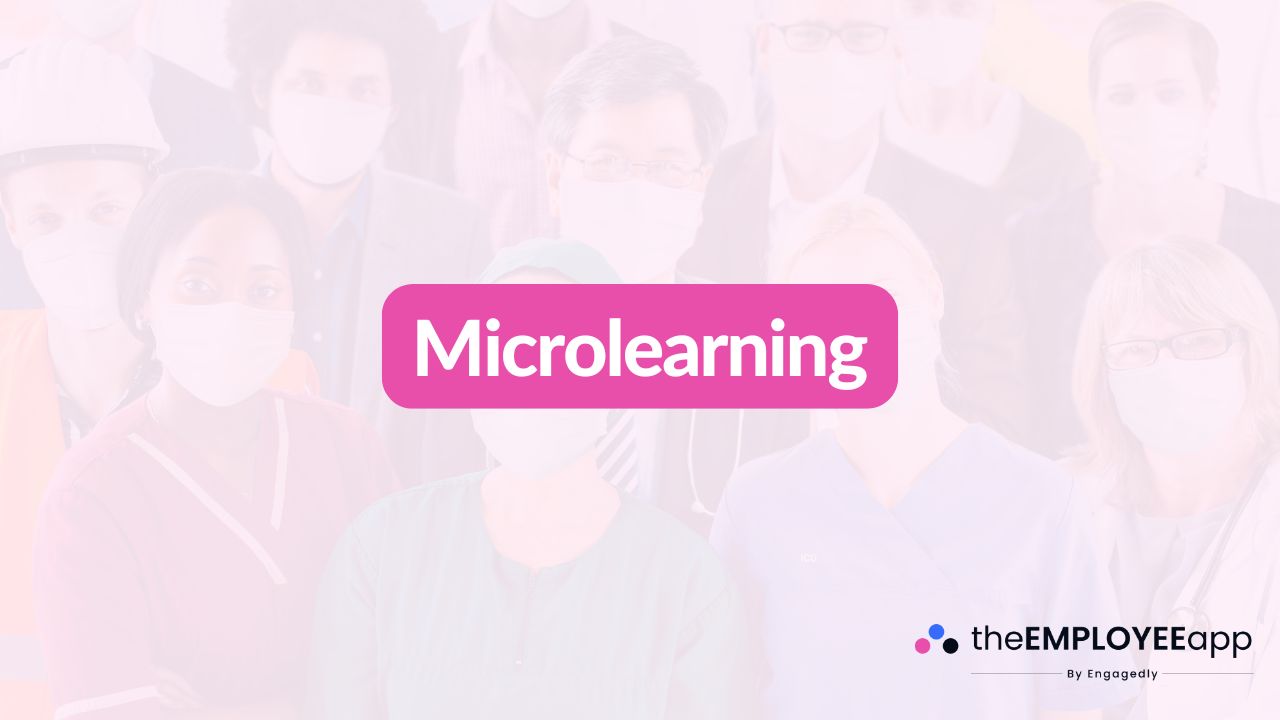
Microlearning is a training strategy that delivers knowledge in short, focused bursts instead of long, traditional sessions. Each microlearning module is designed to be consumed in a few minutes, often through mobile devices, videos, or interactive quizzes. The goal is to make learning quick, engaging, and easier to retain.
Unlike conventional training that might require hours in a classroom or lengthy e-learning courses, microlearning is built around the way people actually learn and absorb information—bit by bit, over time.
In today’s fast-paced workplace, attention spans are shorter, and employees are busier than ever. Traditional training programs can feel overwhelming, leading to lower completion rates and limited knowledge retention. Microlearning addresses this challenge by breaking complex topics into manageable lessons.
It also supports modern workforces that are remote, hybrid, or frontline, giving them access to training whenever and wherever they need it. This makes it especially valuable for compliance training, onboarding, and continuous professional development.
Better Knowledge Retention
Short, targeted lessons make it easier for employees to understand and remember concepts.
Flexibility and Accessibility
Employees can learn on their own schedule—during breaks, between shifts, or on the go—using mobile devices.
Higher Engagement
Interactive formats such as videos, infographics, and quizzes keep employees more engaged compared to long lectures or manuals.
Cost-Effective
Developing microlearning content is often less expensive and faster than creating traditional training programs.
Supports Compliance Training
For industries where compliance is critical, microlearning ensures employees get regular, digestible updates instead of one-time annual training.
Compliance Training: A 5-minute video reminding employees about data privacy rules.
Onboarding: Quick lessons introducing company culture, values, and policies.
Skill Development: Short tutorials on using new software or tools.
Leadership Training: Bite-sized coaching tips delivered via mobile notifications.
These examples highlight how versatile microlearning can be across industries and job functions.
To get the most out of microlearning, organizations should follow proven strategies:
Keep It Short and Focused
Each module should focus on a single concept or skill, typically lasting 3–7 minutes.
Use Mobile-Friendly Formats
Most employees prefer to access training on their smartphones, especially frontline workers.
Incorporate Interactivity
Quizzes, polls, and scenario-based exercises make training more engaging and help reinforce knowledge.
Align with Business Goals
Microlearning should directly support organizational priorities, whether compliance, safety, or professional growth.
Track and Measure Results
Use analytics to measure completion rates, engagement, and knowledge retention. This helps refine the learning experience over time.
One of the most impactful uses of microlearning is in compliance. Instead of annual sessions that employees may quickly forget, organizations can deliver ongoing training in short modules. For example, a monthly 3-minute refresher on workplace safety or cybersecurity helps employees stay sharp and reduces compliance risks.
As workplaces evolve, microlearning is becoming an essential part of modern training strategies. With the rise of mobile-first technology and the need for continuous upskilling, employees expect learning to be as accessible and user-friendly as the apps they use every day.
Organizations that embrace microlearning not only improve training outcomes but also create a culture of continuous learning. Employees feel supported, more confident in their skills, and better prepared to adapt to changes in the workplace.
Microlearning is more than just a training trend—it’s a strategic approach to learning and development. By delivering knowledge in small, impactful doses, organizations can boost retention, improve compliance, and increase employee engagement. For companies looking to modernize their training programs, microlearning is the key to creating a workforce that learns faster and performs better.
